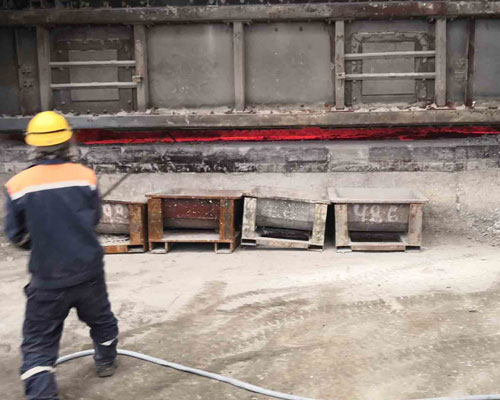For non-metallic inclusions in aluminum alloy melt, mainly oxides, aluminum refining can be used to effectively remove them. For more demanding materials, it can also be removed by filtration during the pouring process. For metal impurities, the general treatment method is to turn harmful factors into favorable factors. That is, it is transformed into a beneficial second phase by alloying method to facilitate the performance of the material and save costs.
Aluminum alloys smelted from aluminum-containing waste materials often contain excessive metal elements, which should be removed as much as possible. The oxidation method can be used to remove various metal impurities from the melt that have a greater affinity for oxygen than aluminum and oxygen and chlorine. For example, magnesium, zinc, calcium, zirconium, sodium, potassium and other elements accelerate the oxidation and chlorination of these impurity elements by stirring the melt. These metal oxides and chlorides are insoluble in the aluminum alloy liquid and enter the slag. It can be removed from the aluminum alloy melt by skimming.
The difference in solubility can also be used to remove metal impurities in the aluminum alloy solution. For example, the aluminum alloy contaminated by impurities is eutecticized with a metal that can dissolve aluminum without dissolving the impurities, and then the aluminum alloy liquid is separated by CFF filtration, and then the added metal is removed by vacuum distillation. Usually, magnesium, zinc, and mercury are added to remove iron, silicon, and other impurities in aluminum, and then vacuum distillation is used to remove these added metals. For example, after the aluminum alloy contaminated by impurities is eutecticized with 30% magnesium, the alloy is allowed to stand for a period of time at a temperature close to the eutectic temperature to filter out the primary precipitated crystalline phases containing iron and silicon, and then vacuum desorption at 850°C Magnesium, impurities with high vapor pressure such as zinc and lead are also removed together with magnesium, and a pure aluminum alloy is obtained after magnesium removal. Under normal circumstances, the secondary aluminum industry is not adopted, and its cost is too high.

In order to further improve the quality of aluminum alloy liquid, or when certain grades of aluminum alloys require strict control of hydrogen content and inclusions, combined refining methods can be used, that is, two refining methods are used at the same time. For example, chlorine salt + filtration refining, argon blowing + flux refining and other methods can achieve better results than single aluminum refining.
Compared with the production of ingots with aluminum ingots for remelting aluminum, the content of hydrogen, non-metallic inclusions and non-aluminum metal impurities in the recycled aluminum melt is much higher than that of aluminum and alloy melts produced with remelting aluminum ingots. If it is not refined, it is difficult to guarantee the quality of recycled aluminum ingots. The method for removing hydrogen and non-metallic inclusions from the secondary aluminum melt is basically the same as the method for producing the ingot melt from the remelted ingot.

